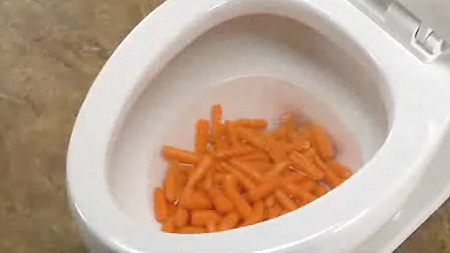Is it Allowed to Flush Food Down the Toilet?
Is it Allowed to Flush Food Down the Toilet?
Blog Article
Here further down you might get lots of incredibly good answers when it comes to What Can Happen If You Flush Food Down the Toilet?.

Intro
Lots of people are often confronted with the problem of what to do with food waste, especially when it involves leftovers or scraps. One usual concern that occurs is whether it's all right to purge food down the bathroom. In this post, we'll explore the reasons why people may consider purging food, the consequences of doing so, and different techniques for correct disposal.
Reasons that people might take into consideration flushing food
Lack of recognition
Some individuals might not understand the potential injury brought on by purging food down the bathroom. They may erroneously believe that it's a harmless practice.
Ease
Flushing food down the commode may seem like a fast and easy solution to getting rid of unwanted scraps, particularly when there's no nearby trash can readily available.
Idleness
In some cases, individuals might simply select to flush food out of large idleness, without taking into consideration the consequences of their activities.
Repercussions of flushing food down the toilet
Environmental effect
Food waste that ends up in rivers can add to pollution and damage water ecological communities. Additionally, the water used to purge food can stress water resources.
Plumbing concerns
Purging food can result in clogged up pipes and drains pipes, triggering pricey pipes fixings and inconveniences.
Sorts of food that need to not be purged
Coarse foods
Foods with fibrous structures such as celery or corn husks can get tangled in pipelines and create blockages.
Starchy foods
Starchy foods like pasta and rice can absorb water and swell, bring about clogs in pipes.
Oils and fats
Greasy foods like bacon or cooking oils ought to never ever be flushed down the commode as they can solidify and create blockages.
Correct disposal techniques for food waste
Making use of a waste disposal unit
For homes equipped with garbage disposals, food scraps can be ground up and purged via the plumbing system. Nonetheless, not all foods are suitable for disposal in this fashion.
Recycling
Certain food product packaging products can be reused, lowering waste and reducing environmental impact.
Composting
Composting is an environment-friendly method to deal with food waste. Organic products can be composted and utilized to enrich dirt for horticulture.
The relevance of correct waste management
Lowering environmental damage
Correct waste monitoring techniques, such as composting and recycling, help minimize pollution and preserve natural resources for future generations.
Safeguarding plumbing systems
By avoiding the practice of flushing food down the commode, homeowners can prevent pricey plumbing repair work and keep the honesty of their plumbing systems.
Verdict
To conclude, while it may be alluring to flush food down the bathroom for convenience, it is very important to understand the prospective effects of this action. By adopting appropriate waste administration techniques and getting rid of food waste properly, individuals can contribute to healthier plumbing systems and a cleaner atmosphere for all.
THINK TWICE BEFORE FLUSHING FOOD DOWN YOUR TOILET IN FALLBROOK CA
Let’s be honest, we’re really supposed to be tossing rotten or leftover food in the compost bin or trash can. But many people like to place scraps of food down the drain of, say, their kitchen sink. That’s why the garbage disposal was invented: so we can continue to place certain foods down the drain without clogging our drain in the process. Smart.
But not all of us have the luxury of having a garbage disposal installed. So, you might continue to shove food down your sink drain anyway – or worse: you might flush them down your toilet! If you’re guilty of doing the latter, you’re going to want to stop, and here’s why:
Toilet Drains Aren’t Designed to Handle Food!
There’s your answer: food just doesn’t belong in your toilet. It may seem like your toilet drain is wider than the drains of your sinks, but truth be told, that isn’t actually the case. The narrower pipes of your toilet leave your plumbing at risk for clogging if you do happen to flush your food. In addition, food doesn’t break down as quickly that toilet paper and human waste do. In turn, this leaves your toilet at risk for a nasty clog.
Although a flush of a tiny pinch of food every now and then isn’t going to completely damage your toilet, there are certain foods that should absolutely not be flushed in your toilet at all. These include starchy foods like mashed potatoes, grains, hard pieces of food that are slow to break down, and fats and oils.
The latter categories of food are particularly problematic as they may harden, expand as they absorb water, break down slowly in your system, or generally create the perfect obstruction with their gelatinous composition. These are all things you don’t want in your plumbing system!
Experiencing a Toilet Clog?
Nobody’s perfect, and we all make mistakes. Sometimes one of the mistakes people make is flushing food down their toilet and later realizing that it wasn’t the best thing to do once they see that their toilet is now clogged. Uh-oh!

As a serious reader on Is it safe to flush food (especially rice) down the toilet?, I think sharing that excerpt was worthwhile. Feel free to take the time to promote this write-up if you liked it. I am grateful for being here. Don't forget to stop by our site back soon.
Click Here Report this page